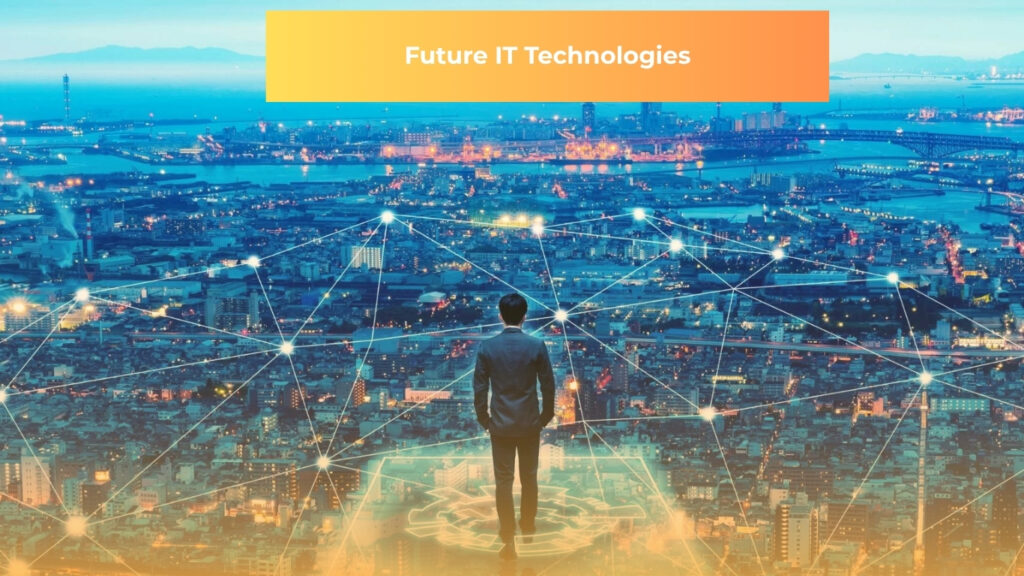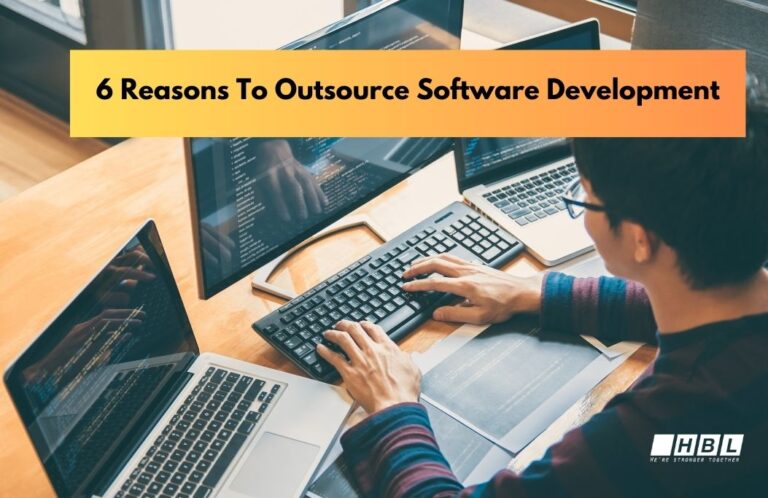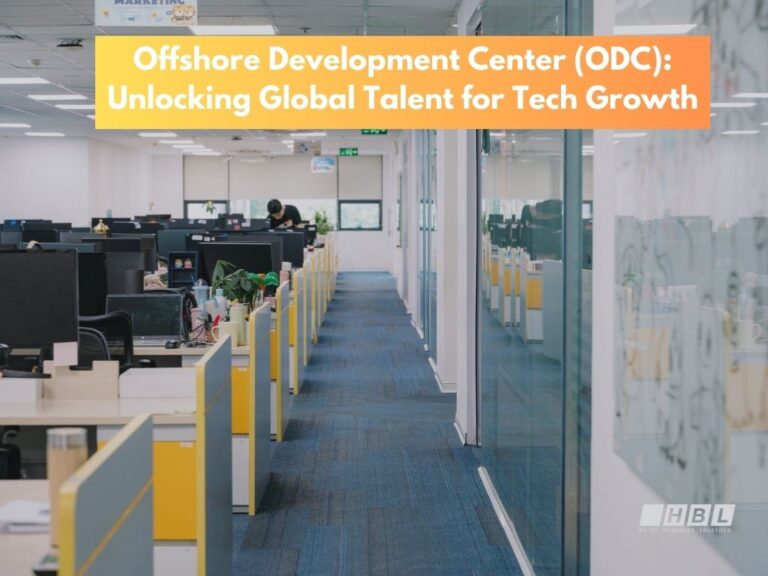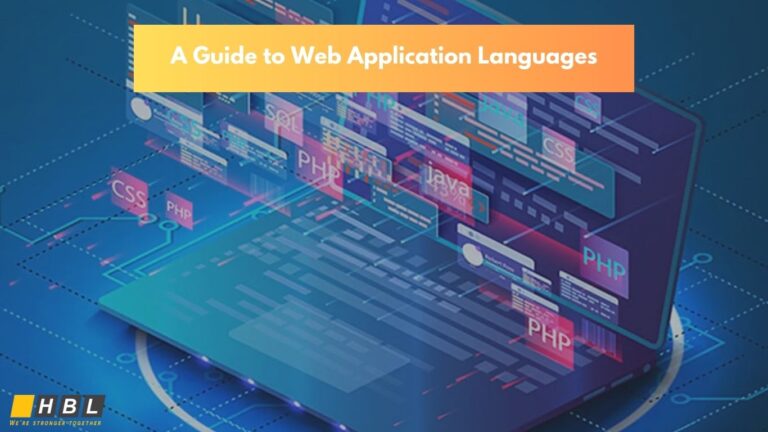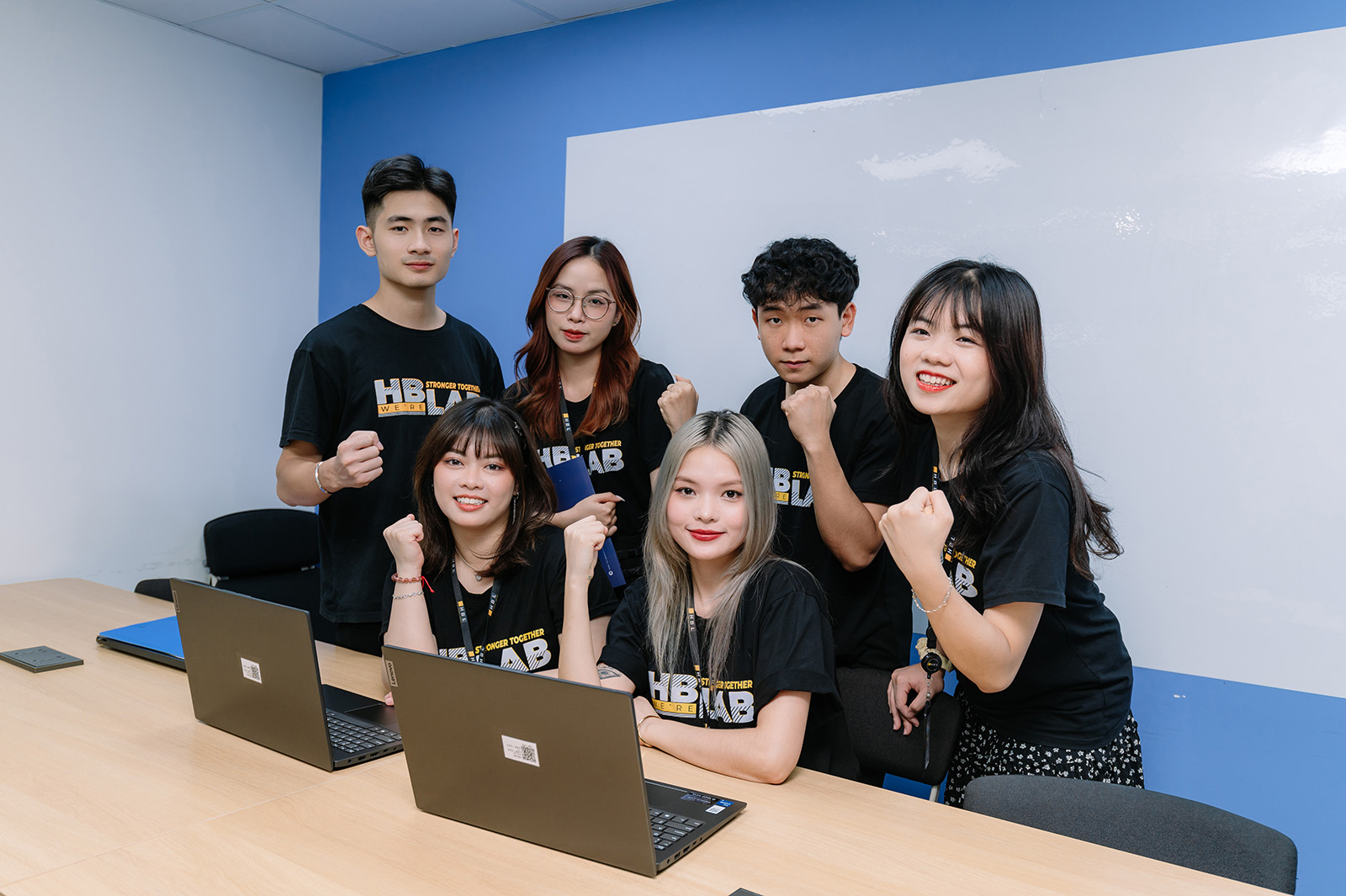Future IT technologies are no longer distant concepts—they’re actively reshaping how businesses operate, compete, and deliver value in an increasingly digital world.
Did you know that 92% of companies plan to increase their AI investments over the next three years, while the global IT outsourcing market is projected to reach $806.55 billion by 2030? From artificial intelligence and quantum computing to scalable cloud solutions and autonomous systems, these emerging technologies are creating unprecedented opportunities for organizations that embrace digital transformation.
The rapid evolution of future IT technologies is fundamentally changing the IT landscape, with technological skills projected to grow in importance more rapidly than any other skills over the next five years. As businesses navigate this transformation, understanding which technologies offer the greatest potential becomes crucial for strategic planning, workforce development, and maintaining competitive advantage in 2025 and beyond.
What Are Future IT Technologies and Why Do They Matter?
Future IT technologies represent the next generation of digital innovations that are transitioning from experimental concepts to practical business applications. These technologies encompass artificial intelligence, quantum computing, advanced robotics, immersive reality systems, and sophisticated automation platforms that collectively drive digital transformation across industries.
The significance of future technology in IT industry extends beyond mere technological advancement—it fundamentally reshapes how organizations create value, serve customers, and operate efficiently. According to McKinsey’s Technology Trends Outlook 2025, these innovations are characterized by their ability to solve complex problems that were previously intractable while creating new possibilities at the intersections of different technological domains.
Market Impact and Business Transformation
The transformative potential of future IT technologies is evident in current market projections. The IT outsourcing market is experiencing unprecedented growth, with a compound annual growth rate (CAGR) of 8.28% expected from 2025 to 2029. This growth is driven by businesses increasingly adopting emerging technologies to digitize operations, improve efficiency, and maintain competitive advantage.
What is the future technology in IT industry becomes clearer when examining adoption patterns across sectors. Healthcare organizations lead with 90% outsourcing at least one IT service, while 77% of employers globally report difficulty finding skilled candidates in emerging technology areas. This talent shortage, combined with rapid technological evolution, is creating both challenges and opportunities for organizations willing to invest in future-ready IT solutions.
The World Economic Forum’s Future of Jobs Report 2025 indicates that 39% of key skills required in the job market will change by 2030, with technological skills—particularly AI and big data—growing in importance more rapidly than any other skill category. This shift underscores the critical nature of understanding and implementing future IT technologies for organizational success.
Top 13 Future IT Technologies Shaping 2025 and Beyond

1. Artificial Intelligence and Machine Learning
Artificial Intelligence stands out as the most transformative future IT technology, with applications spanning from generative AI to autonomous decision-making systems. According to McKinsey’s analysis, AI serves not only as a powerful technology on its own but also as a foundational amplifier for other emerging trends.
Agentic AI represents the next evolution, enabling systems to autonomously plan and execute complex, multi-step tasks. These AI agents can serve as virtual coworkers, handling everything from customer service interactions to software development workflows. The technology has moved beyond simple automation to deliver sophisticated problem-solving capabilities that adapt to novel situations.
Key AI developments include advanced foundation models that combine flexibility with real-world action capabilities, enabling applications in robotics, scientific discovery, and business process optimization. Organizations implementing AI-driven solutions report 30-50% improvements in task completion speeds while maintaining or improving output quality.
2. Quantum Computing Technologies
Quantum computing represents a fundamental leap in computational capability, leveraging quantum mechanics principles to solve problems that are intractable for classical computers. Major technology companies including Google, IBM, Microsoft, and AWS announced significant quantum breakthroughs in 2025, addressing key challenges in error correction and scalability.
Recent developments include Google’s Willow chip, which demonstrated quantum error correction capabilities, and Microsoft’s Majorana 1 processor using topological qubits for enhanced stability. These advances position quantum computing to revolutionize industries including pharmaceuticals, logistics, and cybersecurity by enabling unprecedented computational power for specific applications.
The quantum technology landscape shows 34 countries now maintaining national quantum programs, with the United Nations declaring 2025 the International Year of Quantum Science and Technology. This global investment reflects the strategic importance of quantum capabilities for future technological leadership.
3. Cloud and Edge Computing Evolution
Cloud and edge computing continue evolving as essential scalable IT solutions, driven by exponential growth in AI computing demands. McKinsey analysis suggests global data center capacity could rise 19-22% annually through 2030, more than tripling current demand to reach 171-219 gigawatts annually.
The technology is advancing through distributed workload management, sovereign cloud solutions, and edge processing capabilities that bring computation closer to data sources. Companies are adopting multi-cloud strategies while implementing specialized edge computing solutions for low-latency applications in IoT, autonomous vehicles, and real-time analytics.
Edge computing particularly benefits from 5G network expansion, enabling new applications in autonomous systems, smart cities, and industrial automation. Organizations report significant improvements in response times and operational efficiency when implementing edge-first architectures.
4. Advanced Cybersecurity Technologies
Cybersecurity has evolved into a comprehensive technology domain encompassing AI-powered threat detection, zero-trust architectures, and blockchain-based security solutions. The global cybersecurity market is projected to reach $501.60 billion by 2030, growing at an 11.6% CAGR driven by increasing digitalization and sophisticated threat landscapes.
Modern cybersecurity solutions integrate artificial intelligence for real-time threat analysis, automated incident response, and predictive vulnerability assessment. Zero-trust models require continuous authentication and verification, fundamentally changing how organizations approach network security.
AI-driven IT services in cybersecurity include intelligent threat hunting, behavioral analysis, and automated security orchestration that responds to threats faster than human analysts. These systems can process vast amounts of security data to identify patterns and anomalies indicating potential breaches.
5. Internet of Things (IoT) and Connected Systems
IoT technology expansion represents one of the most significant future IT technologies, with projections indicating approximately 30 billion connected devices by 2025, increasing from 16.6 billion in 2023. This growth creates new opportunities for intelligent operations across manufacturing, logistics, agriculture, and smart city applications.
IoT implementations enable real-time monitoring, predictive maintenance, and autonomous system coordination. Manufacturing facilities use IoT sensors for production line optimization, while agricultural applications monitor soil conditions and crop health for sustainable farming practices.
The convergence of IoT with AI, known as AIoT, enables edge processing that allows connected devices to make intelligent decisions without cloud connectivity. This evolution supports applications requiring immediate responses, such as autonomous vehicles and industrial safety systems.
6. Blockchain and Decentralized Finance (DeFi)
Blockchain technology continues maturing beyond cryptocurrency applications, offering solutions for supply chain transparency, digital identity verification, and decentralized autonomous organizations. The technology provides immutable transaction records and enables smart contracts that automatically execute when specified conditions are met.
DeFi applications are creating new financial service models that operate without traditional intermediaries, offering programmable money and automated financial products. These systems enable global access to financial services while reducing costs and increasing transparency.
Enterprise blockchain implementations focus on improving traceability, reducing fraud, and enabling secure multi-party transactions. Organizations use blockchain for everything from pharmaceutical supply chain verification to intellectual property protection.
7. Extended Reality (AR/VR/MR) Technologies
Extended Reality technologies encompass augmented reality (AR), virtual reality (VR), and mixed reality (MR) applications that create immersive digital experiences. While gaming and entertainment remain primary use cases, these technologies are expanding into training, healthcare, and industrial applications.
Recent advances include lighter, more affordable devices, improved haptic feedback, and AI integration that enhances rendering and tracking capabilities. The AR/VR market saw steady growth in 2024 with headset shipments increasing 10%, though forecasts suggest moderated growth in 2025.
Business applications include immersive training environments, remote collaboration tools, and visualization systems for complex data analysis. Healthcare uses VR for medical training and patient treatment, while manufacturing implements AR for assembly guidance and maintenance procedures.
8. Advanced Robotics and Automation
Robotics technology has evolved beyond traditional industrial applications to encompass autonomous mobile robots, humanoid machines, and AI-driven robotic systems capable of operating in human-designed environments. The convergence of robotics with foundation models enables more flexible and adaptable robotic behaviors.
Service robotics markets are experiencing rapid growth, with 20-35% annual expansion in logistics, hospitality, and agricultural applications. While industrial robot installations grow in mid-single digits, service robots address labor shortages and improve operational efficiency across diverse sectors.
Collaborative robots (cobots) work safely alongside humans, enabling new automation models that combine human creativity with robotic precision. These systems are particularly valuable in manufacturing, food service, and healthcare applications where human-robot collaboration enhances productivity.
9. 5G and Advanced Connectivity
5G technology offers data speeds up to 10 times faster than 4G, with peak rates reaching 20 gigabits per second, enabling real-time communications and supporting bandwidth-intensive applications like IoT, autonomous vehicles, and immersive reality systems.
The expansion of 5G infrastructure facilitates new applications in smart cities, industrial automation, and mobile computing. Vehicle-to-everything (V2X) communications enable coordinated autonomous vehicle operations, while enhanced mobile broadband supports remote work and digital collaboration.
Advanced connectivity also encompasses satellite networks, fiber optic expansion, and edge computing integration that collectively create the infrastructure foundation for future IT technologies. These networks enable distributed computing models and real-time data processing across global operations.
Contact HBLAB today for expert consultation!
10. Green Energy and Sustainable Technologies
Sustainable technology solutions focus on enhancing renewable energy efficiency while reducing environmental impact. Innovations include advanced photovoltaic cells, wind turbines operating at lower wind speeds, and biofuels from non-food biomass sources.
Energy storage technologies, including structural battery composites that integrate energy storage with mechanical functionality, represent breakthrough approaches to sustainable power management. These technologies could reduce vehicle weight while providing energy storage, improving both efficiency and performance.
Green computing initiatives address the environmental impact of data centers and computing infrastructure, implementing AI-enabled thermal management, liquid cooling systems, and renewable energy integration to reduce carbon footprints while maintaining performance.
11. Biotechnology Integration in IT
The convergence of biotechnology and IT creates new possibilities for healthcare, agriculture, and environmental monitoring. Engineered living therapeutics use genetically modified microorganisms to produce medicines directly within patients, potentially reducing costs and improving treatment effectiveness.
Autonomous biochemical sensing technologies enable continuous monitoring of health markers, environmental contaminants, and food safety indicators without human intervention. These systems could transform early disease detection, environmental protection, and supply chain safety.
Biotechnology applications in IT also include bio-inspired computing systems, DNA-based data storage, and biological sensors that integrate with digital systems for real-time health and environmental monitoring.
12. Space Technologies and Satellite Systems
Space technology applications are expanding beyond traditional aerospace to include satellite-based computing, global communications networks, and space-based manufacturing capabilities. Low Earth orbit satellite constellations provide global internet coverage and support remote IoT applications.
Commercial space ventures are developing manufacturing capabilities in microgravity environments, potentially enabling production of materials and components impossible to create on Earth. These developments could revolutionize materials science and advanced manufacturing.
Space-based technologies also support terrestrial applications including GPS navigation, weather monitoring, and disaster response coordination. Integration with terrestrial networks creates comprehensive communication and monitoring systems.
13. Neuromorphic Computing Systems
Neuromorphic computing involves designing computer chips that mimic human brain neural structures and processing methods. These systems process information fundamentally differently from traditional computers, leading to more efficient pattern recognition and sensory data processing.
The technology offers substantial improvements in energy efficiency and computational power, particularly for applications requiring real-time learning and adaptation. Neuromorphic systems excel at processing unstructured data and making decisions in uncertain environments.
Applications include autonomous vehicle navigation, real-time language processing, and adaptive control systems that learn from their environment. These systems could enable new forms of human-computer interaction and autonomous decision-making.
Most In-Demand Future IT Technologies for Career Growth
AI and Machine Learning Specialists
Artificial Intelligence and Machine Learning represent the best IT technology to learn for future career advancement, with 71% of leaders more likely to hire candidates with AI skills over those without, regardless of experience level. The AI market is expected to reach $667.9 billion by 2030, creating unprecedented demand for skilled professionals.

Key specializations include machine learning engineering, natural language processing, computer vision, and generative AI development. Professionals need expertise in frameworks like TensorFlow, PyTorch, and Scikit-learn, along with experience in Large Language Models (LLMs) and Retrieval-Augmented Generation (RAG) systems.
The demand extends beyond technical implementation to include AI ethics, responsible development practices, and business strategy integration. Organizations seek professionals who can navigate regulatory considerations while delivering practical AI solutions that drive business value.
Cloud Computing Architects and Engineers
Cloud computing remains among the top future IT skills, with the market projected to reach $947.3 billion by 2026 and a 20.4% growth rate in 2025. Cloud professionals design scalable infrastructure, implement multi-cloud strategies, and manage complex distributed systems.
Essential capabilities include expertise in major platforms (AWS, Azure, Google Cloud), Infrastructure as Code (Terraform, Ansible), serverless computing, and container orchestration using Docker and Kubernetes. Cloud security, identity and access management (IAM), and cost optimization represent critical specialization areas.
The evolution toward edge computing and hybrid cloud architectures creates additional opportunities for professionals who understand distributed computing models and can implement solutions that balance performance, security, and cost-effectiveness.
Cybersecurity Experts and Specialists
Cybersecurity represents one of the most critical future IT technologies with consistently high demand across industries. The global cybersecurity market growth of 11.6% CAGR reflects the increasing sophistication of threats and the critical importance of digital asset protection.
Specializations include penetration testing, security architecture design, incident response, and compliance management. Professionals need skills in AI-powered threat detection, zero-trust security models, and cloud security frameworks.
Emerging areas include quantum-safe cryptography, IoT security, and AI security systems that can detect and respond to threats in real-time. The integration of AI with cybersecurity creates opportunities for professionals who understand both domains.
Data Scientists and Analytics Professionals
Data science continues as a high-demand field with 14.3% growth in positions, driven by organizations’ need to extract insights from exponentially growing data volumes. The world produces more than 463 exabytes of data daily, requiring sophisticated analysis capabilities.
Modern data scientists work with big data platforms, machine learning algorithms, and statistical analysis tools while possessing business domain knowledge to translate technical findings into actionable insights. Specializations include predictive analytics, business intelligence, and real-time data processing.
The integration of AI with data science creates opportunities in automated machine learning (AutoML), explainable AI, and AI model governance. Professionals need skills in data engineering, model deployment, and cross-functional collaboration.
DevOps Engineers and Automation Specialists
DevOps engineering addresses the growing need for continuous integration, deployment automation, and infrastructure management. Organizations are implementing DevSecOps practices that integrate security throughout the development lifecycle.
Key skills include containerization technologies (Docker, Kubernetes), CI/CD pipeline management, infrastructure automation, and monitoring systems. Cloud-native development practices and microservices architecture represent essential knowledge areas.
The evolution toward AI-driven DevOps (AIOps) creates opportunities for professionals who can implement intelligent automation, predictive maintenance, and self-healing systems that reduce manual intervention while improving reliability.
How Future IT Technologies Are Transforming Industries
Healthcare and Biotechnology Revolution

Future IT technologies are fundamentally transforming healthcare through AI-powered diagnostics, telemedicine platforms, and biotechnology integration. The healthcare sector shows 36% growth in IT services outsourcing, leading all industries in technology adoption.
AI applications in healthcare include medical imaging analysis, drug discovery acceleration, and personalized treatment recommendations. Machine learning models can analyze medical data to identify patterns invisible to human practitioners, improving diagnostic accuracy and treatment outcomes.
Biotechnology convergence with IT enables engineered living therapeutics that produce medicines directly within patients, potentially reducing pharmaceutical costs by 70% through elimination of downstream processing requirements. These advances represent the intersection of biological systems and digital technologies.
Telemedicine and remote patient monitoring systems leverage IoT devices, cloud computing, and AI analytics to provide continuous healthcare delivery. These systems became essential during global health challenges and continue expanding access to medical services in underserved areas.
Financial Services Digital Transformation
The financial services industry is experiencing comprehensive transformation through blockchain technology, AI-powered analytics, and quantum computing applications. Digital banking, cryptocurrency integration, and decentralized finance (DeFi) platforms are reshaping traditional financial models.
AI applications include fraud detection systems that analyze transaction patterns in real-time, algorithmic trading platforms, and customer service chatbots that handle routine inquiries. These systems process vast amounts of financial data to identify risks and opportunities faster than human analysts.
Blockchain technology enables secure, transparent transactions while reducing settlement times and eliminating intermediaries. Smart contracts automate complex financial agreements, reducing costs and improving execution reliability.
Quantum computing applications in finance include portfolio optimization, risk analysis, and cryptographic security systems that could revolutionize financial modeling and security practices.
Manufacturing and Industry 4.0 Integration
Manufacturing industries are implementing Industry 4.0 technologies that integrate IoT sensors, AI analytics, and robotic automation to create smart factories. These systems enable predictive maintenance, quality control automation, and supply chain optimization.
IoT sensors monitor equipment performance, environmental conditions, and product quality throughout manufacturing processes. AI analytics process this data to predict equipment failures, optimize production schedules, and maintain quality standards.
Collaborative robots (cobots) work alongside human operators, combining human creativity and problem-solving with robotic precision and endurance. These systems are particularly valuable in complex assembly operations and customized production environments.
Digital twin technology creates virtual representations of physical manufacturing systems, enabling simulation, optimization, and predictive analysis without disrupting actual operations.
Education and Remote Learning Evolution
Educational technology leverages AI-driven personalized learning systems, immersive reality applications, and collaborative platforms that support distributed learning models. The shift toward hybrid and flexible learning accommodates diverse learning preferences and geographic constraints.
AI-powered learning platforms analyze student performance to customize content delivery, pacing, and assessment methods. These systems can identify learning gaps and provide targeted interventions to improve educational outcomes.
Virtual and augmented reality applications create immersive learning experiences that allow students to explore historical sites, conduct scientific experiments, and practice skills in safe virtual environments.

Blockchain technology enables secure credential verification, digital badges, and micro-credentials that provide flexible pathways for skill development and career advancement.
The Role of AI-Driven IT Services in Business Transformation
Automated IT Service Management
AI-driven IT services are revolutionizing traditional IT service management through intelligent automation, predictive analytics, and self-healing systems. In 2025, trends like AI ticket routing, automated issue resolution, and intelligent analytics are redefining how businesses deliver IT support.
Intelligent ticket routing systems analyze support requests using natural language processing to automatically categorize, prioritize, and assign tickets to appropriate specialists. This reduces response times and improves first-contact resolution rates while freeing human agents to handle complex issues.
Automated root cause analysis uses AI to correlate events across systems, identifying the underlying causes of incidents faster than manual troubleshooting processes. This capability dramatically reduces mean time to resolution (MTTR) and prevents recurring issues.
Self-healing systems can detect anomalies, diagnose problems, and implement corrective actions without human intervention. These systems continuously monitor infrastructure health and automatically adjust configurations to maintain optimal performance.
Predictive Analytics and Maintenance
AI-powered predictive analytics transform reactive maintenance models into proactive systems that prevent failures before they occur. Machine learning algorithms analyze historical performance data, usage patterns, and environmental factors to predict when equipment or systems might fail.
Predictive maintenance applications include server hardware monitoring, network performance optimization, and application performance management. These systems can identify degradation patterns weeks or months before actual failures, enabling planned maintenance during scheduled downtime.
Dynamic resource scaling uses AI to monitor usage patterns and automatically adjust cloud resources, ensuring optimal performance while minimizing costs. These systems can predict traffic spikes, scale resources preemptively, and optimize resource allocation based on real-time demand.
Capacity planning algorithms analyze growth trends and usage patterns to recommend infrastructure investments, software licensing adjustments, and architectural changes that support business growth while controlling costs.
Intelligent Automation Platforms
Hyperautomation represents the evolution beyond basic scripting to comprehensive end-to-end automation of business and IT processes. This approach combines robotic process automation (RPA), AI decision-making, and workflow orchestration to create intelligent business processes.
Workflow automation platforms can handle complex, multi-step processes that previously required human coordination. These systems can integrate with multiple business applications, make decisions based on business rules, and escalate exceptions to human operators when necessary.
Conversational AI platforms provide natural language interfaces for IT service requests, enabling users to interact with IT systems using voice or text commands. These systems can handle routine requests, provide status updates, and guide users through troubleshooting procedures.
Zero-touch operations represent the ultimate goal of AI-driven automation, where IT infrastructure can detect, diagnose, and resolve issues without human intervention. While fully autonomous operations remain aspirational, current systems can handle increasingly complex scenarios automatically.
Global IT Talent Access and Skills Development
1. Addressing the Global Tech Talent Shortage
The global technology talent shortage represents one of the most significant challenges facing organizations implementing future IT technologies. With an estimated deficit of 85 million workers by 2030 and 77% of employers reporting difficulty filling skilled roles, companies must adopt innovative approaches to talent acquisition and development.
Global IT talent access has become essential for organizations seeking specialized skills in emerging technologies. The shift toward remote work has democratized talent access, with 87% of tech companies now hiring globally for remote positions, expanding talent pools by a factor of five.
Industries experiencing the most acute shortages include IT, data science, and cybersecurity, with 77% talent need globally in healthcare and life sciences sectors. The demand for AI and machine learning expertise particularly exceeds supply, with these roles taking an average of 89 days to fill compared to 42 days for traditional technology positions.
Strategic offshoring and nearshoring have emerged as viable solutions for accessing global talent pools. Latin American countries, the Philippines, and Eastern European nations offer skilled workforces with competitive costs, time zone advantages, and cultural compatibility for Western organizations.
2. Remote Work and Distributed Teams
The evolution toward distributed teams has fundamentally changed how organizations access and manage technical talent. Remote work models provide access to previously untapped talent markets while offering professionals opportunities to work for global organizations regardless of geographic location.
Remote hiring strategies enable companies to source talent from underrepresented markets including Africa, Latin America, and Southeast Asia, where educational investments in technology skills are creating capable workforces. These markets offer cost advantages while providing access to diverse perspectives and approaches.
Virtual collaboration platforms and AI-driven project management tools facilitate effective distributed team coordination. These systems enable real-time communication, automated workflow management, and performance tracking that maintains productivity across global teams.
The success of remote teams depends on implementing appropriate technology infrastructure, establishing clear communication protocols, and developing management practices adapted to distributed work models. Organizations report 23% better retention rates for remote technology professionals compared to traditional on-site positions.
3. Upskilling and Reskilling Strategies
The rapid evolution of future IT technologies requires continuous learning and adaptation from technology professionals. The World Economic Forum estimates that 59% of workers will need training by 2030, with technology sectors experiencing the most dramatic skill evolution.
Organizations are investing heavily in reskilling and upskilling programs, with 63% of companies actively funding workforce development initiatives. These programs focus on emerging technology areas including AI, cloud computing, cybersecurity, and data analytics.
AI-powered learning platforms provide personalized training experiences that adapt to individual learning styles and pace. These systems can identify skill gaps, recommend training paths, and track progress toward competency goals.
Skills-based hiring is replacing degree-based requirements, with 56% of companies prioritizing demonstrated capabilities over formal education credentials. This shift creates opportunities for self-taught professionals and those pursuing alternative learning paths including bootcamps, online certifications, and industry training programs.
Professional development in future IT technologies requires combining technical skills with business domain knowledge, soft skills, and ethical considerations. The most successful professionals develop T-shaped skill profiles that combine deep technical expertise with broad cross-functional capabilities.
Scalable IT Solutions for Future Business Growth
1. Cloud-Native Architectures
Scalable IT solutions built on cloud-native architectures provide the foundation for organizations adapting to rapidly changing business requirements. Cloud-native development approaches design applications specifically for cloud environments, leveraging distributed computing, microservices, and container technologies.
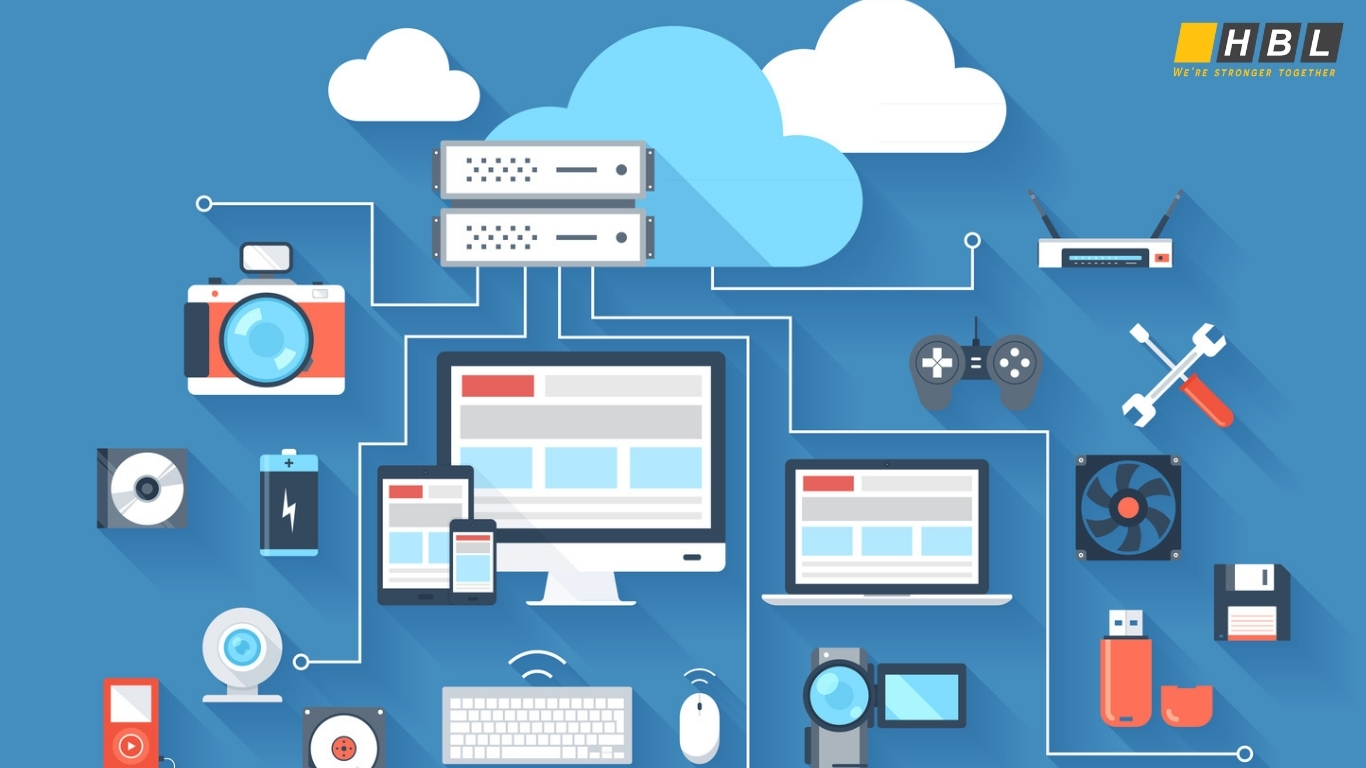
Microservices architecture decomposes applications into independent, loosely coupled services that can be developed, deployed, and scaled independently. This approach enables organizations to iterate quickly, implement changes without system-wide impacts, and scale specific functionality based on demand.
Container orchestration platforms like Kubernetes enable automated deployment, scaling, and management of containerized applications across cloud environments. These systems can automatically adjust resource allocation based on demand, implement rolling updates without downtime, and maintain high availability.
Serverless computing models allow organizations to run code without managing underlying infrastructure, automatically scaling execution based on demand while charging only for actual usage. This approach is particularly effective for event-driven applications and variable workloads.
2. Infrastructure as Code (IaC) Implementation
Infrastructure as Code represents a fundamental shift in how organizations manage and deploy IT infrastructure. IaC tools like Terraform, Ansible, and CloudFormation enable infrastructure provisioning through code, making deployments repeatable, version-controlled, and automated.
Policy as Code extends IaC principles to include automated compliance checking, security policies, and governance rules that are enforced automatically during deployment processes. This approach ensures consistency while reducing manual oversight requirements.
GitOps workflows integrate infrastructure management with software development processes, using Git repositories as the source of truth for both application code and infrastructure configurations. This approach enables automated deployments, rollback capabilities, and audit trails.
Multi-cloud orchestration tools enable consistent infrastructure management across different cloud providers, reducing vendor lock-in while optimizing costs and performance based on specific workload requirements.
3. Auto-Scaling and Performance Optimization
Dynamic resource scaling enables scalable IT solutions to automatically adjust capacity based on real-time demand, ensuring optimal performance while controlling costs. Modern auto-scaling systems use machine learning algorithms to predict demand patterns and preemptively adjust resources.
Performance monitoring systems provide real-time visibility into application performance, user experience, and infrastructure utilization. These systems can identify bottlenecks, predict capacity requirements, and recommend optimization strategies.
Cost optimization algorithms continuously analyze resource usage patterns and recommend adjustments to minimize expenses while maintaining performance requirements. These systems can identify underutilized resources, suggest right-sizing opportunities, and optimize reservation strategies.
Edge computing integration enables processing closer to end users, reducing latency and bandwidth costs while improving user experience. Edge deployments can cache content, process data locally, and make decisions without round-trip communications to centralized servers.
Cost-Effective Software Development in the Future IT Landscape
1. Low-Code/No-Code Platform Adoption
Low-code and no-code (LC/NC) platforms represent a transformative approach to cost-effective software development, enabling organizations to build applications with minimal traditional coding requirements. The LC/NC market is expected to reach $65 billion by 2025, driven by the democratization of software creation and the need to address developer shortages.
These platforms provide visual development environments where business users can create functional applications using drag-and-drop interfaces, pre-built components, and workflow designers. This approach significantly reduces development time and enables rapid prototyping and iteration.
LC/NC platforms particularly benefit organizations facing developer shortages, as they enable non-technical staff to contribute to application development while freeing skilled developers to focus on complex, high-value projects.
Integration capabilities allow LC/NC applications to connect with existing enterprise systems, databases, and APIs, enabling comprehensive solutions without complete system replacements.
2. AI-Assisted Development Tools
AI-powered development tools are revolutionizing software creation through intelligent code generation, automated testing, and enhanced debugging capabilities. Tools like GitHub Copilot are adopted by over 80% of software teams, demonstrating the rapid acceptance of AI assistance in development workflows.
AI code generation can produce functional code from natural language descriptions, enabling developers to focus on architecture and business logic while automating routine coding tasks. These tools understand context, coding standards, and best practices to generate appropriate solutions.
Automated testing generation uses AI to create comprehensive test suites, identify edge cases, and generate test data that improves software quality while reducing manual testing effort.
AI-powered debugging tools can analyze error patterns, suggest fixes, and even implement corrections automatically for common issues, significantly reducing troubleshooting time and improving development velocity.
3. Offshore Development Strategies
Strategic offshore development provides access to global IT talent access while reducing development costs and accelerating project delivery. The global IT outsourcing market growth reflects the increasing adoption of offshore strategies for accessing specialized skills and managing costs.
Nearshoring to regions with time zone proximity, cultural alignment, and strong technical capabilities offers advantages over traditional offshore models. Latin American countries, Eastern European nations, and Southeast Asian markets provide skilled developers with competitive rates and favorable working relationships.
Dedicated team models enable organizations to access offshore talent while maintaining control over development processes, quality standards, and intellectual property protection. These arrangements provide the cost benefits of offshore development with the management control of in-house teams.
Outcome-based delivery models focus on measurable results rather than time-based billing, aligning offshore development with business objectives while providing cost predictability and performance incentives.
Build-Operate-Transfer (BOT) models enable organizations to establish offshore development capabilities with gradual transition to in-house operations, providing flexibility and risk mitigation during scaling phases.
4. The Future of IT: Emerging Technology Trends Beyond 2025
Quantum‑AI Integration
The convergence of quantum computing and artificial intelligence stands among the most transformative future IT technologies beyond 2025, unlocking new computational frontiers for enterprises and research teams alike. Quantum machine learning—one of the most promising future IT technologies—can accelerate complex optimization, enabling breakthroughs in drug discovery, financial modeling, and climate simulation that classical systems struggle to handle.
Hybrid Quantum‑AI architectures will be pivotal among future IT technologies, combining quantum processors for specialized workloads with classical AI for general reasoning to build robust, scalable platforms. Early research points to quantum‑enhanced algorithms that could compress training time and expand pattern recognition, illustrating how future IT technologies can compound performance gains.
Progress toward fault‑tolerant quantum computing further reinforces why future IT technologies matter: higher‑fidelity qubits and error correction will elevate AI at scale, from neural network training to language and vision models. As these advances converge, enterprises adopting future IT technologies will set new benchmarks in speed, accuracy, and cost‑performance.
Sustainable Computing Evolution
Sustainability is now a first‑order design constraint for future IT technologies, aligning computing power with energy efficiency and responsible operations. Green computing practices—core to future IT technologies—reduce data‑center energy use via liquid cooling, renewable integration, and efficient hardware designs without sacrificing performance.
Neuromorphic computing belongs to the next wave of future IT technologies, mimicking neural structures to deliver orders‑of‑magnitude efficiency for AI workloads that demand real‑time learning and low power. By reimagining compute at the architecture level, these future IT technologies enable edge inference, embedded intelligence, and continuous adaptation.
Structural battery composites highlight how future IT technologies blur boundaries between power and product: integrating energy storage into device structures reduces weight, extends runtime, and unlocks new form factors. As sustainable materials and power‑aware architectures proliferate, these future IT technologies will transform devices, wearables, and mobile computing.
Human‑Machine Collaboration Models
Human‑machine interfaces are rapidly evolving across future IT technologies, shifting from tools to collaborative partners that understand context and intent. Multimodal interaction—voice, gesture, and eventually neural signals—will make future IT technologies more intuitive, enabling experts to orchestrate complex systems with natural commands.
Collaborative AI systems exemplify how future IT technologies augment knowledge work through autonomous research, summarization, and decision support that elevates human creativity and problem‑solving. This partnership model ensures future IT technologies enhance judgment rather than replace it, improving outcomes in strategy, design, and operations.
As autonomous systems bridge physical and digital spaces, future IT technologies will synchronize robots, IoT devices, and operators to create continuous, coordinated workflows. Manufacturing, healthcare, and services will see productivity step‑changes as future IT technologies deliver safer operations, higher throughput, and consistent quality.
Decentralized Computing Networks
Decentralization is reshaping infrastructure strategies within future IT technologies, distributing compute, storage, and trust closer to where data is generated. Blockchain‑enabled distributed networks—key future IT technologies—support secure resource sharing, verifiable collaboration, and programmable governance across multi‑party ecosystems.
Edge‑native application design strengthens the resilience of future IT technologies by processing locally for lower latency, better privacy, and reduced bandwidth while maintaining global coordination. This pattern lets future IT technologies deliver real‑time insights at the source—on factory floors, in hospitals, and across smart cities.
Mesh networking, 5G, and next‑gen satellite links make future IT technologies more robust under stress, providing self‑healing connectivity for mission‑critical systems. With decentralized topologies and intelligent routing, future IT technologies sustain operations during outages, enabling continuous service, emergency response, and industrial safety.
HBLAB – Your Partner in Future IT Technologies
In an era where future IT technologies are reshaping global business landscapes, HBLAB stands as a trusted partner in navigating digital transformation challenges. With over 630+ professionals and proven expertise across emerging technology domains, HBLAB delivers scalable IT solutions that enable organizations to harness the full potential of next-generation technologies while maintaining operational excellence and cost efficiency.
Advanced Technology Expertise
HBLAB’s team combines deep technical expertise in AI-driven IT services with practical implementation experience across diverse industry verticals. Our professionals possess advanced certifications in cloud computing, artificial intelligence, cybersecurity, and emerging technology platforms that form the foundation of modern digital transformation initiatives.
Our AI expertise, cultivated since 2017, encompasses machine learning, natural language processing, computer vision, and generative AI applications. Through strategic partnerships including collaborations with VNU’s Institute for AI, HBLAB delivers cutting-edge AI solutions that drive business value while ensuring responsible implementation practices.
Scalable IT solutions designed by HBLAB leverage cloud-native architectures, microservices design patterns, and Infrastructure as Code methodologies that enable rapid scaling while maintaining security, performance, and cost optimization. Our approach ensures that technology investments align with business growth trajectories and evolving market demands.
Global Talent Access and Delivery Excellence
HBLAB’s global IT talent access capabilities address the critical challenge of sourcing specialized skills in emerging technology areas. With 30% senior-level professionals possessing over 5 years of experience in complex projects, our team delivers sophisticated solutions that meet enterprise-grade requirements while maintaining agility and innovation focus.
Our flexible engagement models—including offshore, onsite, and dedicated team arrangements—provide organizations with optimal resource allocation strategies that balance cost efficiency with project control and communication effectiveness. These models enable access to specialized future IT technologies expertise without the overhead of permanent hiring and training investments.
Quality assurance through CMMI Level 3 certification ensures consistent delivery excellence while maintaining security standards and process maturity that enterprise organizations require. Our professionals demonstrate strong English proficiency and cultural alignment that facilitates seamless collaboration with global teams.
Cost-Effective Innovation Delivery
HBLAB’s approach to cost-effective software development combines proven methodologies with emerging technology adoption that reduces development time while improving quality outcomes. Our teams achieve cost efficiency of 30% lower than local market rates without compromising technical excellence or delivery timelines.
Future IT technologies implementation through HBLAB includes comprehensive assessment, strategic planning, pilot development, and scaled deployment services that minimize risk while maximizing business impact. Our methodology ensures that technology adoption aligns with organizational capabilities and business objectives.
The combination of technical expertise, proven delivery methodologies, and flexible engagement models positions HBLAB as an ideal partner for organizations seeking to leverage future IT technologies for competitive advantage. Our approach enables faster time-to-market, reduced implementation risk, and sustainable technology platforms that support long-term business growth.
CONTACT US FOR A FREE CONSULTATION!
Frequently Asked Questions
1. What are the most promising future IT technologies for 2025?
The most promising future IT technologies for 2025 include AI/ML, quantum computing, cloud and edge computing, cybersecurity, IoT, blockchain, XR, robotics, 5G, and sustainable tech. These future IT technologies attract strong investment, deliver practical use cases, and scale across industries.
2. Which future IT technologies are best to learn for career growth?
AI/ML is the top choice within future IT technologies for career growth due to universal adoption and fast payback. Cloud, cybersecurity, and data science also rank high among future IT technologies for durable, well‑paid roles.
3. How will AI‑driven IT services transform businesses with future IT technologies?
AI‑driven IT services automate service management, predict failures, and enable self‑healing, accelerating value from future IT technologies. These future IT technologies cut downtime, improve user experience, and reduce operating costs through intelligent automation.
4. What skills are most in demand for future IT technologies professionals?
In‑demand skills for future IT technologies include AI/ML, cloud architecture, cybersecurity, data analytics, and DevOps. Soft skills like product thinking and communication help translate future IT technologies into business outcomes.
5. How can businesses implement scalable IT solutions to leverage future IT technologies?
Adopt cloud‑native design, microservices, and Infrastructure as Code to scale future IT technologies efficiently. Automated pipelines and edge integration ensure future IT technologies deliver performance without cost overruns.
6. What are the benefits of global IT talent access for future IT technologies?
Global talent access speeds up delivery of future IT technologies by widening specialized skill pools. It also lowers costs and enables 24/7 progress on future IT technologies through distributed teams.
7. How do future IT technologies impact software development costs?
Future IT technologies reduce development costs via AI coding assistance, LC/NC platforms, and cloud optimization. With disciplined architecture, future IT technologies also shorten release cycles and improve quality.
8. What role does quantum computing play in future IT technologies?
Quantum computing tackles optimization, simulation, and cryptography challenges that stretch classical limits within future IT technologies. As maturity grows, quantum will amplify other future IT technologies like AI and materials discovery.
9. How can companies prepare for emerging trends in future IT technologies?
Create a technology roadmap, run pilots, and invest in upskilling to operationalize future IT technologies. Build adaptable architectures and governance so future IT technologies scale safely and compliantly.
10. What are the challenges of adopting future IT technologies?
Key challenges include skills gaps, integration complexity, and security and compliance risks around future IT technologies. Robust change management and interoperability standards de‑risk future IT technologies adoption.
CONTACT US FOR A FREE CONSULTATION!
Read More:
– AI in Industrial Automation: The Definitive Guide Powering Smart Factories in 2025
– Quality Automotive Services Market (2025): Comprehensive Industry Analysis and Statistics
